- Home
- T. J. English
The Savage City Page 9
The Savage City Read online
Page 9
In a prison in upstate New York, one young black inmate received the news. His name was Dhoruba Bin Wahad.
A few days after the arrest of George Whitmore, Bin Wahad sat at a table in the prison library looking for something to read. Great Meadow Correctional Facility—better known as Comstock, after the town where it is located—didn’t have the best library, but Dhoruba was usually able to find something to interest him. There were always the newspapers, mostly New York City editions that were his only access to news from back home. The only problem was, the papers were often censored by the Bureau of Prisons. It was not uncommon to pick up a copy of the Times or Daily News or Herald Tribune and find that an entire article had been clipped out of the paper, leaving a gaping hole in the page. Since neither Dhoruba nor any other inmate was privy to the censorship process, it was hard to know what kinds of things were being cut out. Dhoruba figured that the excised articles were political in nature, probably relating to the civil rights movement down South, with their photos of police attack dogs, fire hoses, and billy clubs being used on marchers—images deemed too incendiary for a predominantly Negro prison population.
On this particular day, all the New York papers led with the same story: The police in Brooklyn had extracted a confession from a young black kid for a notorious double murder. Dhoruba looked over a copy of the Daily News, headlined “Confession: Stumbled into Killing Two,” and read: “The Wylie-Hoffert murders were declared solved yesterday with the police-reported confession of a pimple-faced jobless laborer…” He picked up the Journal American, which devoted three full pages to the confession. One of its articles was headlined “The Wylie Killer: Boy Jekyll-Hyde,” and described George Whitmore Jr. as a “Negro drifter” who was equal parts milquetoast and psychopath. The main article in the Journal American was headlined “How Police Broke the Wylie Case: Step by Step Account.” “Police were astonished at the way the accused described the murder apartment,” it read. “They marveled at his memory and quick recall.” The article heaped special praise on Detective Edward Bulger, who was described as “an astute practical psychologist, as well as a crackerjack detective.”
Both newspapers made special note of a devastating piece of evidence: the photo of one of the victims, which the killer had stolen from the apartment after he did the deed.
It wasn’t until Dhoruba picked up the Times that he found, in the third paragraph of a front-page article, the following information: “But at his arraignment in Brooklyn Criminal Court, Whitmore, through his court-appointed lawyer, Jerome Leftow, recanted the confessions. Mr. Leftow said they had been obtained under duress.”
Reading these accounts, Dhoruba felt in his gut that this kid Whitmore was being framed. The story sounded typical of criminal justice in America as he knew it to be, in his experience as a young black man born and raised in the ghetto.
It wasn’t that Bin Wahad had been framed himself. He was guilty of the charge for which he was doing time—felonious assault with a deadly weapon. Dhoruba felt that the assault had been an act of self-defense, but he’d accepted a plea in exchange for a five-year sentence. Long before he violated any laws and wound up in prison, however, he’d come to see the police as the enemy. His attitude toward the men in blue was rooted in his upbringing on the streets of the Bronx in the 1950s.
To Dhoruba, blacks and cops in the Bronx were like cowboys and Indians. The cops were the cowboys; they had better firepower and superior fortifications. The Negroes were the Indians; they knew the terrain and how to live off the land. They shared the same territory, mostly as hostile tribes. When one of the natives became unruly and engaged in a confrontation with a cop on the beat, the cavalry was called in; the police had strength in numbers. But the natives had guile and fortitude and carried with them the spirit of a proud and unconquerable people.
As a teenager, Dhoruba sought to create his own version of strength in numbers: he joined a youth gang. The gang he chose was the Sportsmen Disciples, a division of the Disciples, a citywide gang. The Disciples had many rivals, including the Fordham Baldies, the Scorpions, the Renegades, and various divisions of the Seven Crowns—the Valiant Crowns, the Bohemian Crowns, the Collegian Crowns, and so on. In the Morrisania section of the Bronx, where Dhoruba lived, teen gang culture was a living, breathing organism. A kid joined a gang to embrace the vitality of life. Years later, Bin Wahad recalled:
Back then, before heroin came to dominate illegitimate capitalist activity in the ghetto, gangs served a different kind of purpose—especially for black males. They were an organization that taught young men codes of manhood; i.e., your word is your bond, loyalty—if someone lied to you, you confront them. That might seem like macho posturing in this day and age, but the gang did serve that purpose. They weren’t criminal enterprises to make money. We wasn’t hustling for money. You only started hustling for money when you graduated out of the gang and became a thug.
Whether they were dealing dope or merely seeking solidarity, however, the police considered gangs a threat, plain and simple.
In June 1955, the NYPD initiated a special enforcement program called Operation 42, named after the Four-Two Precinct in Morrisania. Operation 42 was aimed specifically at the southeast Bronx, a squalid, overcrowded area of slums and small shops. Special patrol units were sent into the community. Commissioner Stephen P. Kennedy gave the troops their marching orders: “You shall meet violence with sufficient force, legally applied, to bring violators to justice swiftly. Mob rule and mob violence is an evil thing. We cannot compromise with evil. You must enforce the law.” Youth officers were assigned to every precinct in the area. It was their job to identify the different gangs and monitor their behavior, especially in and around the public schools. Remembered Dhoruba:
The cops who used to patrol the areas around the schools, they were really dirty. They were sadistic. And if they would catch you with your gang colors on, it was an obligatory ass whupping. It was routine. They didn’t even give you a JD [juvenile delinquent] card and call your parents. They just whupped your ass…. They would slap you around in a squad car, but when they took you back to the precinct is where the fun and games began…. When you’re a kid and they’re slapping you upside the head, they usually got your hands cuffed. In our neighborhood, the police were bullies.
By the late 1950s, the gang problem had escalated in the city’s Negro communities to the point where Commissioner Kennedy began talking about riots and racial Armageddon: “A race riot could cause more destruction of community relations than an atom bomb, and the lingering effects of such a riot would be worse for the community than that of the fallout of an atom bomb.”
There were, of course, gangs of every ethnicity: Irish, Italian, Puerto Rican, Chinese, and Negro. Composed primarily of teenagers, gangs engaged in what was called “jitterbugging,” later known as gang banging, or armed warfare between gangs. The dominant weapon of choice was the switchblade, but some enterprising gang brothers were known to make “zip guns,” converted cap pistols rigged with a lead pipe and rubber band so that they could fire .32-caliber bullets. More than anything, the gangs were an intimidating presence in a community: they knocked over garbage cans, endangered innocent bystanders with their jitterbugging, and sometimes mugged and assaulted people.
Youth officers from the NYPD were liable to give an ass-whupping to any gang kid they caught—black, white, or Latino—but Negro gangs presented a special problem. Blacks weren’t supposed to leave the ghetto, especially at night. Those who did learned quickly that New York City was a white man’s world.
I lived not far from Yankee Stadium. The stadium was in a Jewish neighborhood on the other side of the Grand Concourse [the main residential thoroughfare in the Bronx]. Everybody there was white. I would go over there to play ball at Macombs Park, across the street from Yankee Stadium. If [you] stayed late at the park and got caught there at night, you were in big trouble with the police. They would throw us in their car and drive over to the Italian neighborhood,
home of the Fordham Baldies. The police would dump us out in the middle of hostile territory—at night. You’d have to run home, if you were lucky enough to make it without getting attacked.
The relationship between Negro youths and the cops was circumscribed by a simple fact: the police considered it their job to keep the colored people in their place.
For Dhoruba, growing up in one of the country’s most densely populated ghettos, learning the laws of the jungle was a gradual process. He was born June 30, 1944, and raised in a tenement at 166th Street and Boston Road. His name at birth was Richard Earl Moore; he was the son of Collins and Audrey Moore (née Cyrus). Collins Moore was from a southern family that had migrated from Georgia and settled in Harlem during the 1920s. Dhoruba’s mother’s family was from the island of Antigua in the Caribbean. It was a classic Harlem romance: a southern Negro and a child of Caribbean immigrants meeting on the streets of Harlem and falling in love while the rest of the world fretted about the war in Europe.
Dhoruba grew up mostly without a father. Collins Moore joined the army shortly after he was born; before too long, he and Audrey Moore separated. As a young boy, Dhoruba never knew much about his father, beyond the fact that his aunts and uncles on his mother’s side called him a ne’er-do-well and a lowlife.
Dhoruba’s mother was a young woman, barely out of her teens, who worked full-time and tried to have some semblance of a social life. By the time her only son was four or five, he was living mostly with his aunt and his grandparents, all of whom lived in the same general neighborhood.
In 1956 and 1957, the New York Housing Authority constructed two massive housing projects in the area known as Morrisania. The Morris Houses and McKinley projects changed the tenor of the neighborhood. Poor blacks from the South and Puerto Ricans flooded into the projects, and before too long what had once been a small village where everyone knew one another became a kind of armed camp. Muggers and predators were able to prey on merchants and residents and then disappear into the impenetrable maze of the projects. It was a tough environment for an adolescent.
Like many young men coming of age in the Bronx, Dhoruba found refuge in a street gang. It gave him a feeling of belonging, taught him the rituals of manhood, and shaped his feelings toward the police in ways that would determine his life for years to come.
Jitterbugging was a gas, but by the time of Dhoruba’s seventeenth birthday he was ready for something more. One of his mother’s brothers had been a hero in the Second World War, and she convinced Dhoruba that he should follow in his footsteps and join the army. Dhoruba was only seventeen, so his mother had to sign the enlistment papers. In November 1960, he was shipped off to basic training at Fort Dix, New Jersey, and then on to Killeen, Texas, for advanced infantry training (AIT).
Dhoruba liked the physical and weapons-related aspects of basic training, but he had a problem with authority. “I never liked the attitude of the drill instructors talkin’ trash about your mama, spittin’ in your face,” he recalled. “Where I came from, you talk about somebody’s mama and be spittin’ in their face, there’s gonna be repercussions. I took it for a while, but then I started to stray.”
Two incidents got Dhoruba into trouble with army command. One was a time when he stole a cache of M-1 bayonets from a munitions supply barracks and took them back to the Bronx for his gang cronies. The haul made him a local hero among the Disciples, but when the military police found out about it, he was disciplined.
Dhoruba’s second, more serious infraction occurred when he returned to Texas. He and two other soldiers, Jingles and Ralph, devised a scam for selling starched fatigues, which were highly prized by the rank and file. Dhoruba and his partners would steal the fatigues from another battalion’s clothesline and mix them with their own battalion’s laundry. Rare camel fatigues, professionally cleaned, pressed, and creased—they sold like hotcakes.
Jingles, Ralph, and Dhoruba got busted and were given extra duty. Instead of complying, Dhoruba went AWOL, sneaking into town to get drunk. He was apprehended and thrown in the stockade. It was his first time behind bars. Two weeks later—after six months in the army—he was given an undesirable discharge and sent packing. “I look back now and I realize that rebellious attitude I had in the military served me well. If I hadn’t been that recalcitrant, I would have eventually been sent to Vietnam. If I had pursued things like I thought I would when I enlisted, by ’65 I probably would have been a sergeant in charge of a squad with my black ass in the Mekong Delta. The life expectancy of a sergeant wasn’t too good. I would have been dead.”
Dhoruba returned to the old neighborhood and resumed his life as a member of the Disciples. His military weapons training put him in good standing with the gang. He was still only eighteen, with a restless energy that earned him the nickname Torch. He was a ball of spontaneous combustion, ready to go up in flames at the slightest provocation.
In retrospect, the incident that landed Dhoruba in prison seems almost inevitable, given the level of gang tension in the early ’60s. The Disciples were at war with many gangs, especially the Fordham Baldies. Dhoruba rarely went anywhere without a .32-caliber pistol.
One spring night in May 1962, he ventured into rival territory in the northern Bronx with a homeboy who was going to see his girlfriend. Dhoruba and his friend were walking through a housing project in the Soundview neighborhood when they were set upon by a group of jitter-buggers who had a beef with Dhoruba’s friend. Dhoruba pulled out his pistol and opened fire, with everyone scattering for cover in the courtyard of the projects. No one was hit, and Dhoruba ditched his gun and went home. At 2:00 A.M. the police came knocking at his door. They had witnesses to the shooting, and somehow they had recovered his pistol. Dhoruba was arrested and charged with felonious assault with a deadly weapon.
Dhoruba already had one strike on his record, an attempted burglary conviction from earlier that year. After consulting with a court-appointed lawyer, he pled guilty to the felony assault charge and was given a sentence of five years.
On the eve of his nineteenth birthday, Dhoruba became an inmate of the New York State correctional system—first at Elmira, a facility for youth offenders, and later at Cocksackie, a prison full of gangbangers. By the time he was transferred to Comstock in 1964, Dhoruba had begun to see prison life as a microcosm of life on the outside. The inmates were mostly black and Latino, the guards and prison authorities exclusively white. Institutional racism was deeply entrenched:
The racism that existed in the prison system was an advanced stage of what existed in the street; it was overt. The guards and commissary employees were mostly inbred country boys from upstate, and they were racist to the core. They had no problem calling you nigger, but they would only do that when they were all massed together in a goon squad. “Nigger, get in that cell!” They only said that when there was a whole group of them whipping on you. One on one, they wouldn’t dare use that word. Because if they said nigger to a brother who was a Nation of Islam militant, they got knocked the fuck out. A brother would submit to the group ass-whupping he knew was coming later just to land one good blow.
Dhoruba clashed with guards, often landing in what was called the Box. “The first time I got sent to the Box was because a guard told me to do something, and I said no.” The Box varied from facility to facility, but the concept was the same: maximum separation.
Inmates sent to the Box first spent seven days in a screening cell. On a ground floor tier known as the Flats, screening cells were stripped-down cells with only a toilet and a bed frame without a mattress. A worn, soiled mattress was delivered to the cell each night at 9:30 P.M. and picked up at 6:00 A.M. Beyond the bars of the cell, the catwalk was fenced in by a wire-mesh screen.
After a week in the screening cell, a phalanx of guards arrived in the middle of the night. In Dhoruba’s case, three white guards pulled him out of bed at 2:00 A.M. for transport to the Box, which was separated from general population. Dhoruba was shackled and dragged to a freight elevato
r—a place where beatings routinely occurred, beyond the sight of eyewitnesses. Dhoruba was clubbed, kicked, and punched, as was routine. Inmates usually arrived at the Box with cuts, abrasions, even broken bones, their files annotated to read “inmate injured while resisting transport.” Their heads were shaved bald. The Box housed everything from killers and reprobates to political prisoners; it was a true Brotherhood of the Damned, a prison within a prison.
It was during his time in the Box that Dhoruba first came into contact with a breed of militant Negro he’d never known before. On the streets of the Bronx, Dhoruba had been a mindless gangbanger with no real consciousness or sense of history. In prison, he began to see things in a new way.
A Muslim inmate by the name of Mjuba took young Dhoruba under his wing and began giving him books and pamphlets to read. Among the first of these materials were two pamphlet-sized books from the 1920s called Ten Black Presidents and Sex and Race by J. A. Rogers, a Jamaican-born historian and ethnographer who wrote from an African American perspective. For blacks whose only education had been in the U.S. public school system, Rogers’s writings were mind-blowing, both for the historical information they contained and for their point of view, which did not exist in the mainstream culture. Rogers’s writings were so prized in prisons that inmates painstakingly copied his pamphlets by hand so that more inmates could have access to them.
Rogers wasn’t the only writer Dhoruba discovered in prison. For the first time, he read the slave narratives of Frederick Douglass, Nat Turner, and Harriet Tubman. Most significantly, it was during his time in prison that Dhoruba came under the influence of Malcolm X.
Before his incarceration, Dhoruba had heard of the fiery activist who was shaking up Harlem and the rest of New York with his pointed condemnations of white supremacy and racial trickery. But Dhoruba had been an adolescent, mostly without racial consciousness, a particle of matter bouncing randomly through space without focus or direction. The activities and exhortations of Martin Luther King, Malcolm X, and others were a distant echo to Torch, the gangbanger primed to shoot first and ask questions later. Now that he was behind bars, however, Dhoruba began to reckon with a world he had not known existed—a world of theory, logic, and righteous ness that, when combined with action, had the power to ignite a revolution.

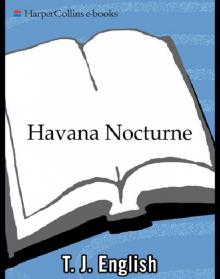 Havana Nocturne
Havana Nocturne Paddy Whacked
Paddy Whacked American Gangsters
American Gangsters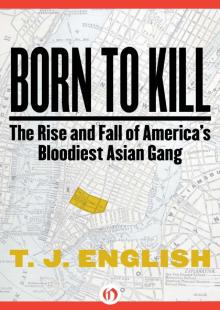 Born to Kill
Born to Kill Westies
Westies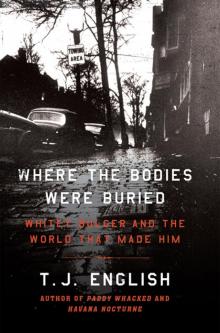 Where the Bodies Were Buried
Where the Bodies Were Buried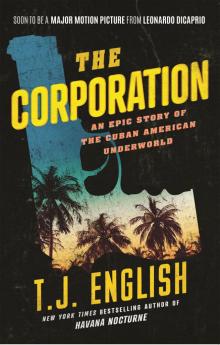 The Corporation
The Corporation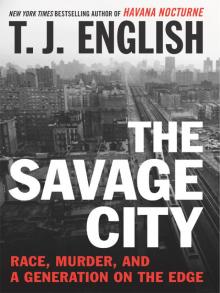 The Savage City
The Savage City